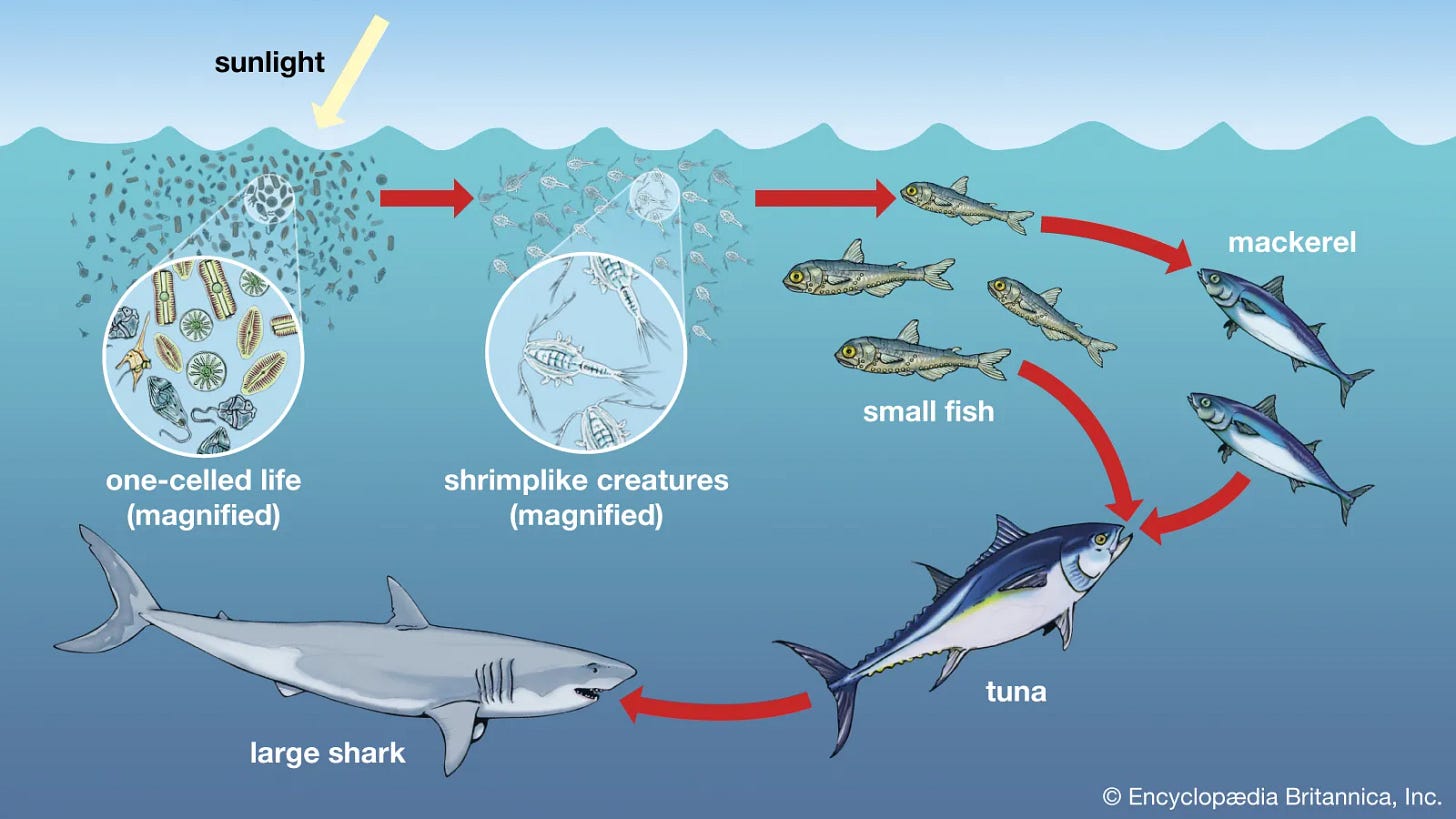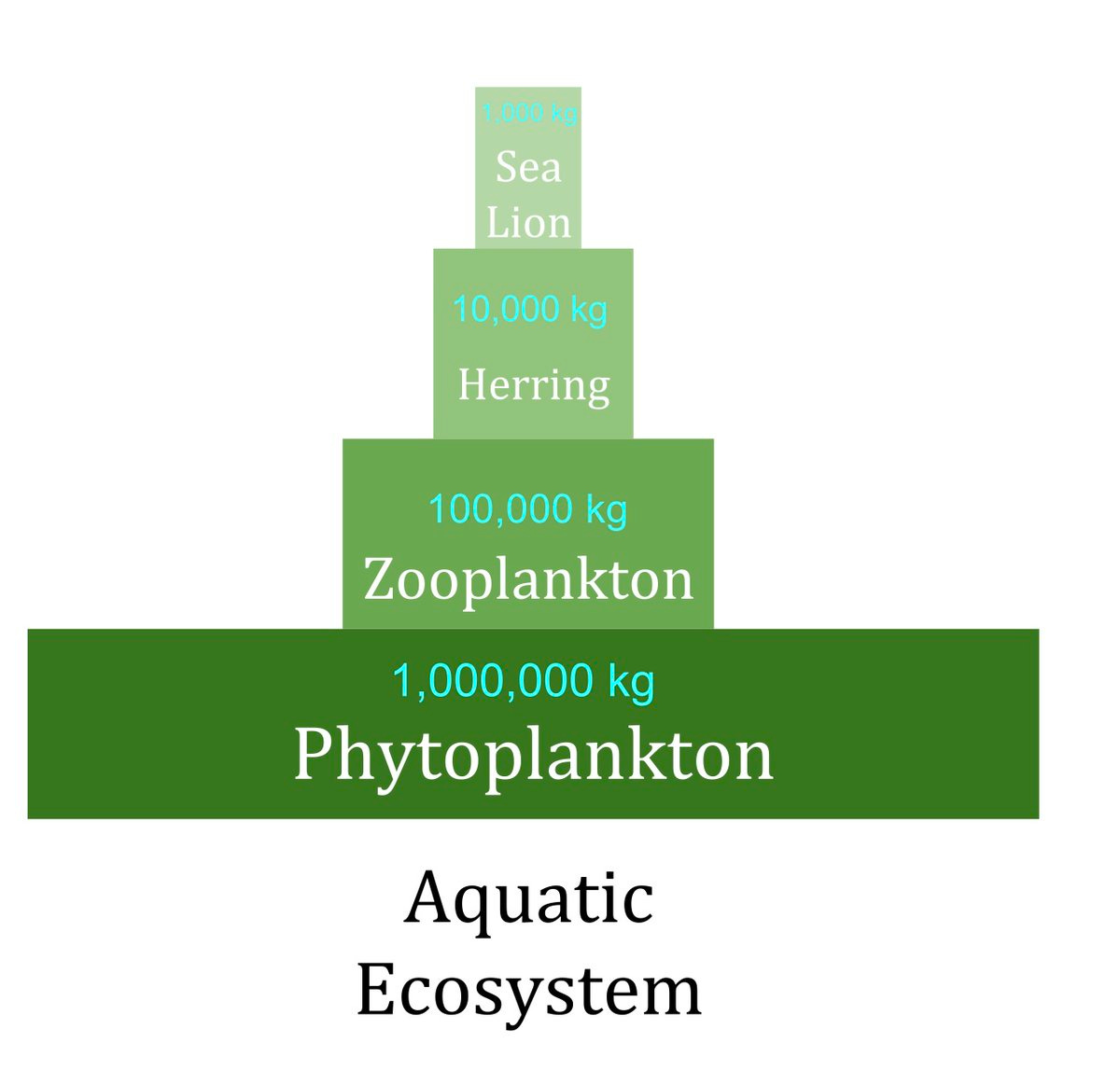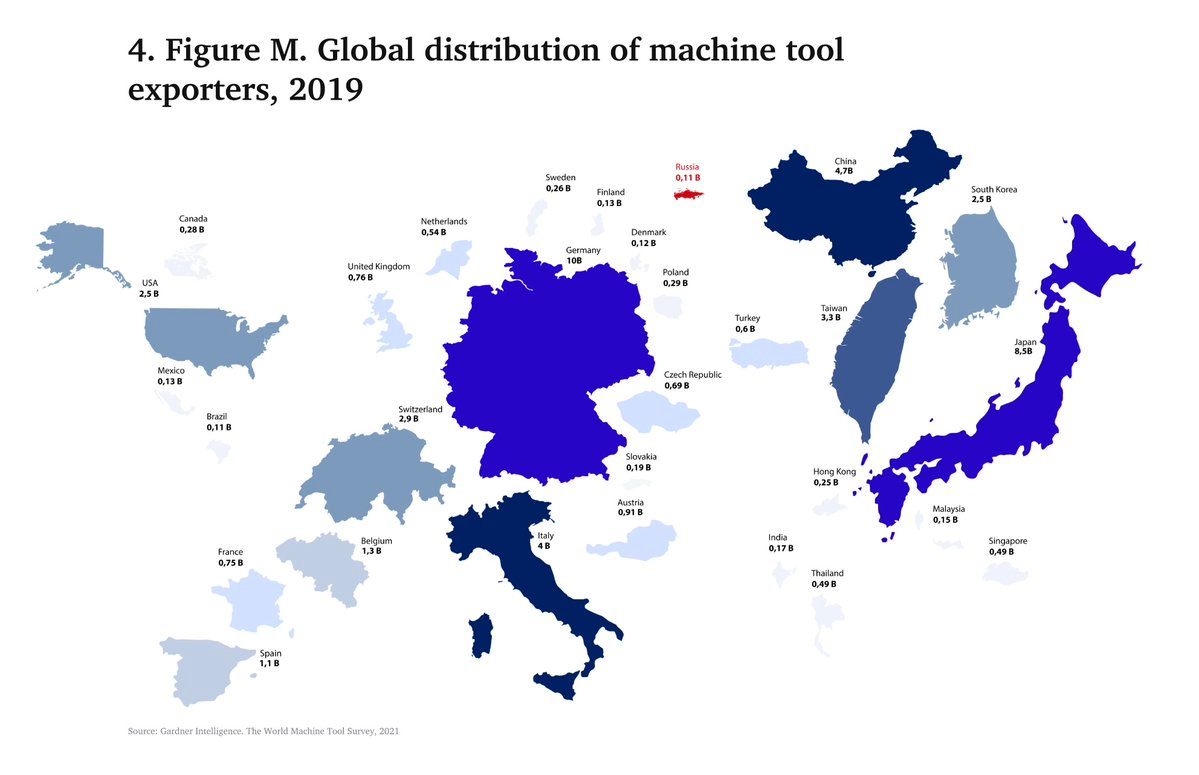We all get the idea of a food chain. Rabbits eat grass, foxes eat rabbits, bobcats eat foxes. Each step of this chain is called a trophic level. The primary producers or autotrophs (plants, etc.) constitute the lowest level. All the upper levels (heterotrophs) feed off them. Herbivores eat plants. Carnivores eat the herbivores. Second order carnivores eat the first order carnivores and herbivores
And so on
Now the thing with the food chain is that the different trophic levels are unequal in size. There's more plants than herbivores, more herbivores than carnivores, more first order carnivores than second order carnivores. Long story short, each of the upper trophic levels weighs less than a lower level it feeds off. And “less” means order(s) of magnitude less.
Biomass-weighted, the food chain will look more like a pyramid. The lowest level weighs more than all the upper levels combined
The trophic levels are qualitatively different from each other. Sea lions are very much unlike the plankton, wolves are very much unlike the grass. Upper levels are more complex. Upper levels are smarter. Yet, the upper levels are smaller. Therefore, were we to aggregate the total weight of a food chain, its structure would be lost and the more complex upper levels would turn completely invisible in the aggregated data
And that is exactly what happens with the economic statistics. The strong negative correlation between a size of a trophic level and its complexity makes the upper, smarter levels nearly invisible in the highly aggregate data
Consider this tweet:
Wester export controls cannot damage the Russian war economy
… because Western exports are small, compared with China
This reasoning is utterly and completely wrong, Yet, it seems to be well-supported by the aggregate statistics
Why? Because aggregation destroys the structure
Restoring the structure
Let us imagine the manufacturing sector of economy as a manufacturing chain. Its upper levels feed off (=sell to) the lower levels, while the lowest level of all feeds off the individual buyers.
What would constitute the lowest trophic level of all?
Production of the consumer goods. These are the autotrophs of the economy, who feed the heterotrophic levels situated above. The output of consumer goods is way larger compared with all the upper levels combined. It is also a relatively primitive, “dumber” level of the manufacturing industry. Production of consumer goods rarely requires tight controls, high precision or complex geometry. More often than not, consumer goods manufacturing is optimised for the price.
Being the largest, and the dumbest sector of the manufacturing industry, it is simultaneously the only level visible to the general audience. All you can see in a supermarket is the consumer goods
It is also the only level you can see in the aggregate statistics. Chinese manufacturing output may exceed the output of the United States + next few major industrial powers combined
That is because the upper trophic levels are just as invisible to the statistics as they are to the human eye
They are smart. But they are small
Aggregation turns them invisible
Consider the machine tools. Metalworking machines constitute principal industrial equipment for any manufacturing industry, including the consumer goods production. It is an upper trophic level. While China seems to absolutely dominate in the (aggregate) global manufacturing output, its positions on the metalworking equipment market are very much weaker.
In 2019, it was a not much larger exporter than Italy.
(NB: The extreme unevenness in how countries count their machinery output makes these estimates effectively incomparable. Consequently, foreign trade figures serve as a far better comparative indicator of the domestic production capacities than the self-reported “domestic production” estimates. The latter largely reflect an internal political game, esp. in the countries like Russia or China)
Why? Because the production of production equipment is a smart market. It is a knowledge intensive sector, more demanding in terms of technology and the qualified labor than most manufacturing industries. Being based on the:
Mature mechanical engineering
Innovative digital control technology
Continuous tradition of craftsmanship
machine tool market is harder and longer to catch up on compared with the production of almost all consumer goods. Knowledge intensive, rather than capital intensive, it is dominated by the small to medium scale producers. All of whom combined are almost invisible in the aggregate data. Because the entire sector is small
Consider that Japan is the world's second largest exporter of machine tools, almost on pair with Germany. And yet, machine tool industry makes for less than 2% of its manufacturing output. The upper levels of the manufacturing chain are small
The market of kitchen utensils (frying pans, etc) is larger than the market of lathes for producing the frying pans for the same reason there is more grass than hares. An upper level needs a far, far larger lower level to feed off (=sell to).
Let’s sum up. The manufacturing sector can be disaggregated into the lowest, autotrophic level (selling to consumers) and to the upper, heterotrophic levels that feed off the former. Those upper levels are quantitatively different from the lowest level in a sense that they are orders of magnitude smaller. They also tend to be qualitatively different:
More knowledge intensive
More tacit knowledge (craftsmanship) intensive
Harder to pick up
The bottleneck of the manufacturing sector
Into the bottleneck
The Walton Group is a major Bangladeshi producer of consumer goods, mostly electric appliances like fridges, air conditioners, TVs and so on. These consumer goods make for almost all of its output
Yet, this lowest trophic level (consumer goods) makes only for the final link of a very long manufacturing chain. Let us review some of the upper, much smaller in size, bottleneckish elements of this chain. Like the Walton Die - its tooling production facility. Tooling is the major bottleneck of the mass production oriented manufacturing methods, such as the pressing or molding
Keep reading with a 7-day free trial
Subscribe to kamilkazani to keep reading this post and get 7 days of free access to the full post archives.











